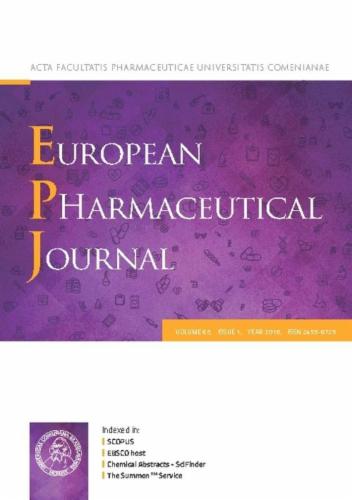冷冻过程中热相互作用的数学模型:对产品形态和干燥行为的影响
IF 4.3
3区 医学
Q1 PHARMACOLOGY & PHARMACY
引用次数: 0
摘要
生物药品的冷冻干燥是提高其稳定性和保质期的关键操作。非注射药物通常冷冻在小瓶中,放置在与温控货架接触的地方。不受控制的成核是批次不均匀性的来源,因为在不同时间冷冻的小瓶中,成核发生在不同的温度下。小瓶在凝固过程中释放的热量可能会转移到邻近的小瓶,影响它们的热分布并改变批内成核温度和冻结速率的分布。本研究表征了相互作用和非相互作用载荷构型下的热耦合。这些估计被用作一个简单的一维数学模型的输入,以评估热相互作用对冻干产品形态的影响。热相互作用对预测成核温度(尤其是后期成核小瓶)和冻结速率有较大影响。热耦合对成核温度和冻结速率的综合影响导致冻结产物形态的不同。与非相互作用小瓶相比,一批相互作用小瓶内的异质性更高,导致更宽的孔径和干燥时间分布,与实验数据一致。所提出的模型提供了洞察每个小瓶的批次在冷冻过程中的热历史,支持冷冻过程的合理设计。本文章由计算机程序翻译,如有差异,请以英文原文为准。

Mathematical modelling of thermal interactions during freezing: Effects on product morphology and drying behaviour
Freeze-drying of biopharmaceuticals is a crucial operation to increase their stability and shelf-life. Parenteral drug products are generally frozen in vials placed in contact with a temperature-controlled shelf. Uncontrolled nucleation is a source of batch heterogeneity, as nucleation occurs at different temperatures in vials frozen at different times. Heat released from a vial undergoing solidification may be transferred to neighbouring vials, impacting their thermal profiles and altering the distribution of the nucleation temperature and the freezing rate within the batch. This study characterised thermal coupling in interacting and non-interacting loading configurations. These estimations were used as input in a simple 1D mathematical model to assess the effect of thermal interactions on the freeze-dried product morphology. Thermal interactions strongly impacted the predicted nucleation temperature, especially for late-nucleating vials, and the freezing rate. The combined effect of thermal coupling on nucleation temperature and freezing rate resulted in different frozen product morphology. Heterogeneity within a batch of interacting vials was higher compared to non-interacting vials, leading to broader pore size and drying time distributions, in agreement with experimental data. The presented model provides insight into the thermal history of each vial of the batch during freezing, supporting the rational design of freezing processes.
求助全文
通过发布文献求助,成功后即可免费获取论文全文。
去求助
来源期刊
CiteScore
9.60
自引率
2.20%
发文量
248
审稿时长
50 days
期刊介绍:
The journal publishes research articles, review articles and scientific commentaries on all aspects of the pharmaceutical sciences with emphasis on conceptual novelty and scientific quality. The Editors welcome articles in this multidisciplinary field, with a focus on topics relevant for drug discovery and development.
More specifically, the Journal publishes reports on medicinal chemistry, pharmacology, drug absorption and metabolism, pharmacokinetics and pharmacodynamics, pharmaceutical and biomedical analysis, drug delivery (including gene delivery), drug targeting, pharmaceutical technology, pharmaceutical biotechnology and clinical drug evaluation. The journal will typically not give priority to manuscripts focusing primarily on organic synthesis, natural products, adaptation of analytical approaches, or discussions pertaining to drug policy making.
Scientific commentaries and review articles are generally by invitation only or by consent of the Editors. Proceedings of scientific meetings may be published as special issues or supplements to the Journal.

 求助内容:
求助内容: 应助结果提醒方式:
应助结果提醒方式:


